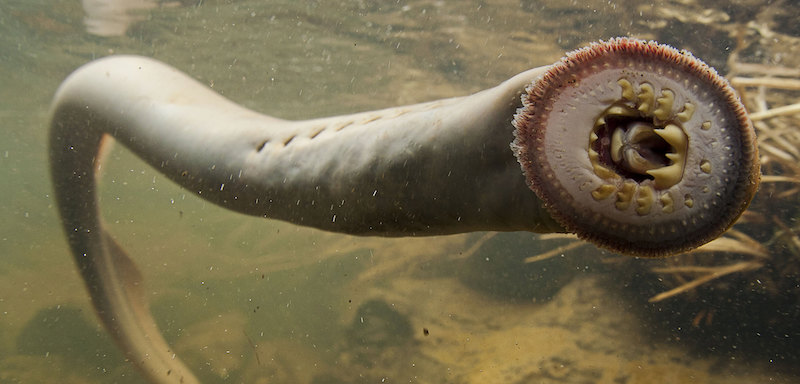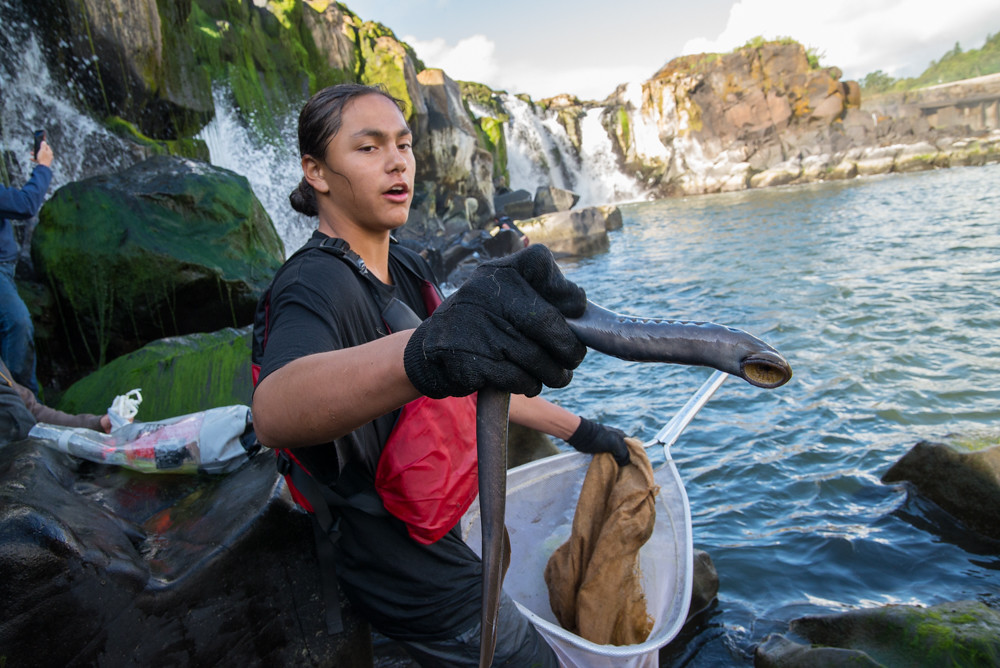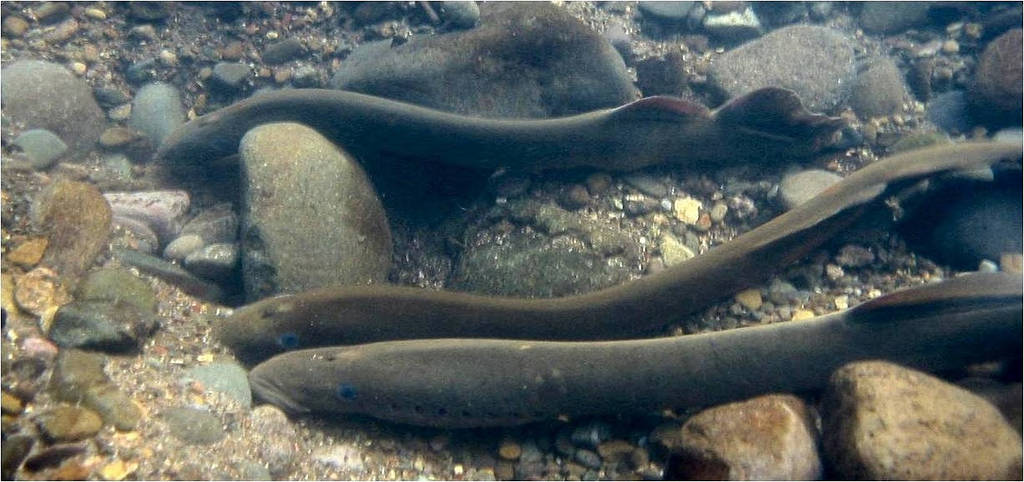This article was first published in the Spring 2024 edition of the Clearwater Defender. You can have the Defender delivered straight to your house when you become an FOC member.
Pacific lamprey (Entosphenus tridentatus) are eel-shaped jawless fish. Lamprey aren’t actually eels, but a kind of very primitive cartiliginous fish, like sharks and rays. They were some of the very first fish to evolve, at least 350 million years ago during the Cambrian explosion – before trees existed! Instead of a jaw, they have a circular mouth filled with teeth, which adult lamprey use to suck blood and fluids from larger fish and whales in the ocean (but they don’t kill their host).
Like salmon, they are anadromous, meaning they migrate between the Pacific ocean and freshwater streams to spawn. They spawn in gravelly, cold-water streams like the South Fork of the Clearwater, laying upwards of 100,000 eggs in summer.
Unlike salmon, though, newly-hatched, eyeless lamprey drift into the slow moving parts of streams, dig themselves into the sand, and filter-feed on algae for up to six years. In this stage they are most sensitive to pollution and high temperatures.

After their larval stage, they grow eyes and their circular-saw mouth, and start a long journey to the ocean. Little is known about their life at sea, but we do know that they attach themselves to a big host fish or whale for two years or more, just hanging on and sucking blood. After a buffet of liquid fish (and a big growth spurt), fattened adult lamprey start the journey back inland to spawn.
The way home is not easy! For one, adult lamprey don’t eat at all on the trip home, living solely off of fat reserves. For another, it’s very difficult for a mostly finless fish to get over falls and dams. They use their circular-saw mouths to latch on to and inch their way over boulders and waterfalls. Once they reach their spawning habitat, they mate and die, starting the cycle over again.

Like other anadromous fish, their survival depends on managing the four H’s: habitat, harvest, hatcheries, and hydropower. In particular, hydropower has led to enormous population declines. Lamprey are weak swimmers, and do not swim up fish ladders as easily as salmon and steelhead. Reservoirs also degrade lamprey spawning habitat and expose them to increased predation.
This collapse has harmed local Indigenous people. Lamprey are a key ceremonial food source of the Nez Perce and other Columbia Plateau Tribes, often caught by hand during migration. Their fatty meat is very nutritious and is often smoked and fed to children. Nez Perce Tribal elder Horace Axtell recalled:
“My great aunt was a medicine woman, and she would collect the fat that would drip off an eel as it was cooking over a fire. She would store the fat in a small bottle and use it for oil in lamps and for medicines.” (source: critfc.org)
White settlers largely overlooked the lamprey, or used them for bait. At the Celilo hatchery, (at the now-flooded Celilo falls), tens of thousands were caught and ground into fish food for salmon, basically propping up one rare species with another. It didn’t last long though. After the damming of northwestern rivers in the 1960s, populations collapsed.
In 2003, the Center for Biological Diversity and other northwest environmental groups petitioned the US Fish and Wildlife Service to list the fish on the Endangered Species Act. Unfortunately, the USFWS sidestepped listing lamprey as a threatened species, citing a lack of data.
Instead, they created a collaborative organization, the Pacific Lamprey Conservation Initiative, that has so far failed to alter the long-term declines of lamprey in the West. Such collaborative efforts are politically expedient but often legally unenforceable, undercutting the agency’s broad powers to protect our native wildlife.

In the Clearwater, populations of lamprey are functionally extinct. The 10-year average returning lamprey at the Lower Granite Dam is only 102 per year, down from perhaps tens of thousands prior to hydropower. Almost all individual Clearwater and Snake River basin populations are listed as critically imperiled or possibly extinct, as per a 2019 USFWS assessment.
The exceptions are in areas adult fish have been reintroduced by the Nez Perce Fisheries, like Asotin Creek, the Grande Ronde River, and the South Fork of the Salmon River. The Nez Perce and other Northwest Tribes have been very active in advocating for and reintroducing lamprey.
The fate of the lamprey, much like for salmon and steelhead, depends on breaching the Lower Four Snake River dams. As of 2024, political efforts to breach the dams have stalled, though staunch opposition to breaching is waning as fish populations collapse.
Friends of the Clearwater advocates for a future without the Lower Snake Dams, and with Pacific lamprey, perhaps the strangest critter in Idaho.